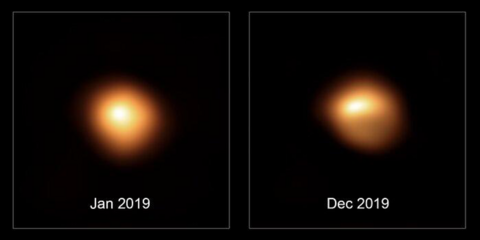New Research Explains Real Reason Betelgeuse Was Dimming

Despite rather wild media speculation surrounding the cause of Betelgeuse’s recent inexplicable dimming, new research has finally provided a definitive answer. Astronomers from the University of Washington and Lowell Observatory published a paper in mid-February that reveals the real reason for the dimming. It seems Betelgeuse is not about to explode in a glorious astronomical display—the light from the red supergiant was simply being obscured by a large circumstellar dust cloud.
Betelgeuse Isn’t Cool Enough to Explode
Emily Levesque of UW and Philip Massey of Lowell Observatory made the discovery on February 14th, 2020, using the Lowell Discovery Telescope. The astronomers observed Betelgeuse using a spectrometer, which provides the exact spectrum of light emanating from a star. Using this information, and by employing a signature-specific filter (which "dampens" overbearing spectra), they were able to determine the star’s current temperature. They were checking to see if the star was undergoing any significant cooling, which would indicate that it was close to exploding. They discovered that Betelgeuse was only slightly cooler than previously measured but was nowhere near the level it will reach as it nears the end of its life.
Betelgeuse, like other red supergiants, has massive convection cells, around three or four, that stretch the entirety of the star. Over time, these convection cells will bring hot gas and material to the surface to cool before falling back down. If only one of these cells had risen to the surface, Betelgeuse's change in temperature would've been much more dramatic. Compared to temperature measurements taken in 2004 (which were made by a team that both Levesque and Massey were a part of), the temperature of Betelgeuse has changed by only 50-100 degrees Celsius.

Because of this lack in temperature change, Massey and Levesque concluded that the dimming must have been from a dust cloud obscuring the star. As Levesque mentions in the Lowell Observatory press release on the findings, “Red supergiants will occasionally shed material from their surfaces, which will condense around the star as dust. As it cools and dissipates, the dust grains will absorb some of the light heading toward us and block our view.” Dust and material clouds have already been discovered around other red supergiants, making this an entirely plausible explanation for the dimming.
Further Study
Since their discovery, Betelgeuse is already starting to brighten up again. In all likelihood, it's returning to its regular intervals of brightness fluctuations. However, this certainly doesn’t mean the study of Betelgeuse will stop—there is quite a bit more to learn about red supergiants. As Levesque states, “Red supergiants are very dynamic stars. The more we can learn about their normal behavior—temperature fluctuations, dust, convection cells—the better we can understand them and recognize when something truly unique, like a supernova, might happen.”